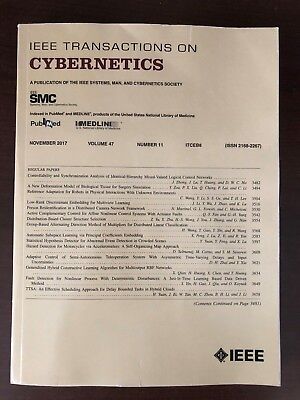Toward Reliable Medical Image Segmentation by Modeling Evidential Calibrated Uncertainty.
IF 10.5
1区 计算机科学
Q1 AUTOMATION & CONTROL SYSTEMS
引用次数: 0
Abstract
Medical image segmentation is critical for disease diagnosis and treatment assessment. However, concerns regarding the reliability of segmentation regions persist among clinicians, mainly attributed to the absence of confidence assessment, robustness, and calibration to accuracy. To address this, we introduce deep evidential segmentation model (DEviS), an easily implementable foundational model that seamlessly integrates into various medical image segmentation networks. DEviS not only enhances the calibration and robustness of baseline segmentation accuracy but also provides high-efficiency uncertainty estimation for reliable predictions. By leveraging SL theory, we explicitly model probability and uncertainty for medical image segmentation. Here, the Dirichlet distribution parameterizes the distribution of probabilities for different classes of the segmentation results. To generate calibrated predictions and uncertainty, we develop a trainable CUP. Furthermore, DEviS incorporates an uncertainty-aware filtering (UAF) module, which designs the metric of uncertainty-calibrated error to filter out-of-distribution (OOD) data. We conducted validation studies on publicly available datasets, including ISIC2018, KiTS2021, LiTS2017, and BraTS2019, to assess the accuracy and robustness of different backbone segmentation models enhanced by DEviS, as well as the efficiency and reliability of uncertainty estimation. Additionally, two potential clinical trials were conducted using the UAF module. The clinical application conducted on the Johns Hopkins OCT and Duke OCT-DME datasets demonstrated the effectiveness of the model in filtering OOD data. The second trial evaluated its efficacy in filtering high-quality data on the FIVES datasets. At last, the proposed DEviS method was extended to semi-supervised medical image segmentation, where it exhibited strong robustness under noisy conditions. Our code has been released in https://github.com/Cocofeat/DEviS.基于证据校准不确定度建模的可靠医学图像分割。
医学图像分割是疾病诊断和治疗评估的关键。然而,临床医生对分割区域的可靠性仍然存在担忧,这主要归因于缺乏置信度评估、稳健性和准确性校准。为了解决这个问题,我们引入了深度证据分割模型(DEviS),这是一个易于实现的基础模型,可以无缝集成到各种医学图像分割网络中。DEviS不仅提高了基线分割精度的校准性和鲁棒性,而且为可靠的预测提供了高效的不确定度估计。通过利用SL理论,我们明确地为医学图像分割的概率和不确定性建模。在这里,Dirichlet分布参数化了不同类别分割结果的概率分布。为了产生校准的预测和不确定性,我们开发了一个可训练的CUP。此外,DEviS还集成了一个不确定性感知滤波(UAF)模块,该模块设计了不确定性校准误差度量来过滤分布外(OOD)数据。我们在ISIC2018、KiTS2021、LiTS2017和BraTS2019等公开数据集上进行验证研究,评估DEviS增强的不同骨干网分割模型的准确性和鲁棒性,以及不确定性估计的效率和可靠性。此外,使用UAF模块进行了两项潜在的临床试验。在约翰霍普金斯OCT和杜克OCT- dme数据集上进行的临床应用证明了该模型在过滤OOD数据方面的有效性。第二项试验评估了其在过滤FIVES数据集的高质量数据方面的功效。最后,将该方法扩展到半监督医学图像分割中,在噪声条件下表现出较强的鲁棒性。我们的代码已经在https://github.com/Cocofeat/DEviS上发布。
本文章由计算机程序翻译,如有差异,请以英文原文为准。
求助全文
约1分钟内获得全文
求助全文
来源期刊

IEEE Transactions on Cybernetics
COMPUTER SCIENCE, ARTIFICIAL INTELLIGENCE-COMPUTER SCIENCE, CYBERNETICS
CiteScore
25.40
自引率
11.00%
发文量
1869
期刊介绍:
The scope of the IEEE Transactions on Cybernetics includes computational approaches to the field of cybernetics. Specifically, the transactions welcomes papers on communication and control across machines or machine, human, and organizations. The scope includes such areas as computational intelligence, computer vision, neural networks, genetic algorithms, machine learning, fuzzy systems, cognitive systems, decision making, and robotics, to the extent that they contribute to the theme of cybernetics or demonstrate an application of cybernetics principles.
 求助内容:
求助内容: 应助结果提醒方式:
应助结果提醒方式:


